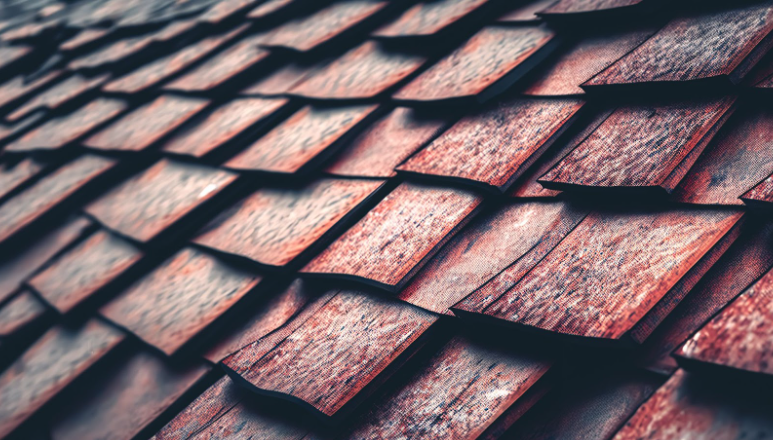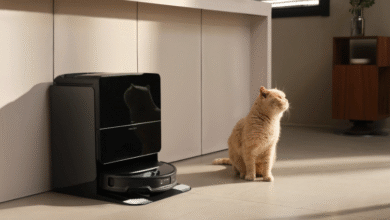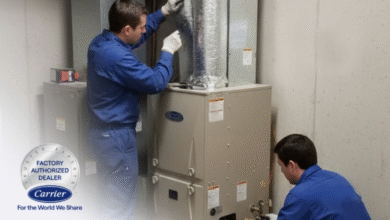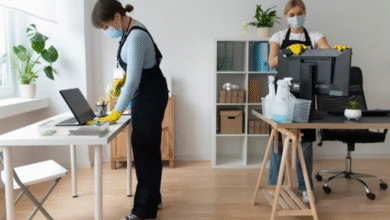How to Tell if Your Roof is Damaged by Hail

Severe hailstorms can cause significant damage to your roof, potentially leading to costly repairs if left unaddressed. It’s crucial for homeowners to inspect their roofs after a hailstorm to identify any damage promptly.
Identifying hail damage early on can save you from more extensive and expensive repairs down the line. In this article, we’ll guide you through the process of inspecting your roof for hail damage and what to look out for.
Key Takeaways
- Inspect your roof for hail damage after every severe hailstorm.
- Look for signs of damage, including missing or damaged shingles, granule loss, and cracked or broken tiles.
- Check your roof’s flashing, vents, and chimneys for damage or displacement.
- Document any damage for insurance purposes.
- Consider hiring a professional for a thorough roof inspection.
Understanding Hail Damage: An Overview
Understanding the impact of hail on your roof is crucial for maintaining your home’s integrity. Hail damage can compromise the structural integrity of your roof, leading to costly repairs if not addressed promptly.
What is Hail Damage?
Hail damage refers to the destruction or deterioration caused to roofing materials by hailstones during a storm. The severity of the damage depends on the size and velocity of the hailstones, as well as the type of roofing material.
The impact of hail can result in dented, cracked, or missing shingles, which can expose your home to further risks such as water damage and structural issues.
Common Signs of Hail Damage
Identifying the signs of hail damage is key to preventing further issues. Some common indicators include:
- Dented or bruised shingles
- Granule loss on asphalt shingles
- Cracked or broken tiles
- Exposed or damaged flashing
Regular inspections can help you catch these issues early, potentially saving you from costly repairs down the line.
See also: Understanding the Importance of Home Insurance in Stratford
Why Inspect After a Hailstorm?
Inspecting your roof after a hailstorm is vital for several reasons. Firstly, it allows you to identify any damage early, which can prevent minor issues from becoming major problems. Secondly, documenting the damage can be crucial for filing insurance claims.
| Reasons to Inspect | Benefits |
| Early Detection of Damage | Prevents minor issues from escalating |
| Documentation for Insurance | Facilitates the claims process |
| Maintenance and Repair | Ensures your roof remains in good condition |
By understanding hail damage and taking proactive steps, homeowners can protect their investment and ensure their roof remains in good condition.
Types of Roofs Vulnerable to Hail
Roofing materials such as asphalt shingles, metal, tile, and slate have different levels of resistance to hail damage. Understanding the specific vulnerabilities of your roof type is essential for spotting hail damage on your roof and taking prompt action to prevent further issues.
Asphalt Shingles
Asphalt shingles are one of the most common roofing materials in the United States. They are relatively affordable and easy to install. However, they are also among the most vulnerable to hail damage. Hailstones can cause significant damage to asphalt shingles, including cracking, granule loss, and even complete destruction of the shingle.
When inspecting asphalt shingles for hail damage, look for signs such as:
- Cracks or splits in the shingles
- Loss of granules, which can lead to exposed underlying material
- Dents or dings on the surface of the shingles
As noted by roofing experts, “Asphalt shingles are particularly susceptible to hail damage because they are brittle and can crack under impact.” (Roofing Contractor Magazine)
| Roofing Material | Vulnerability to Hail | Common Damage Signs |
| Asphalt Shingles | High | Cracks, granule loss, dents |
| Metal Roofs | Moderate | Dents, scratches, potential for rust |
| Tile and Slate Roofs | Low to Moderate | Cracks, chips, potential for displacement |
Metal Roofs
Metal roofs are known for their durability and resistance to weathering. While they can withstand hail, they are not entirely immune to damage. Hailstones can cause dents and scratches on metal roofs, and in severe cases, can compromise the coating or the metal itself.
When inspecting metal roofs, pay attention to:
- Dents or dings that can weaken the structure
- Scratches that can expose the metal to rust
- Any signs of rust or corrosion
Tile and Slate Roofs
Tile and slate roofs are known for their longevity and aesthetic appeal. They are generally more resistant to hail damage than asphalt shingles. However, they can still suffer from cracks, chips, and displacement due to hail impact.
For tile and slate roofs, inspect for:
- Cracks or chips in the tiles or slate
- Displacement or loosening of tiles or slate
- Any signs of wear around the edges or corners
According to a study on roofing materials, “Tile and slate roofs, while durable, require regular inspection after hailstorms to identify and address any damage promptly.” (Journal of Building Science)
By understanding the vulnerabilities of your roof type, you can better identify hail damage and take appropriate measures to maintain your roof’s integrity.
Visual Inspection Techniques
To accurately assess hail damage, it’s essential to perform a meticulous visual inspection of your roof. This process involves a thorough examination to identify any signs of damage that could compromise the integrity of your roofing system.
When to Perform a Visual Inspection
The best time to conduct a visual inspection is immediately after a hailstorm, when the damage is fresh. However, inspections can be performed at any time, and it’s recommended to do so periodically to catch any potential issues early.
Timing is crucial: Inspecting your roof after a storm but during daylight hours can help in identifying damage more effectively.
Tools You’ll Need
For a comprehensive inspection, you’ll need a few basic tools. These include:
- A sturdy ladder that can reach your roof safely
- Binoculars for a closer look without climbing
- A flashlight to inspect dark or shaded areas
- A camera or smartphone to document any damage found
Having the right tools can make the inspection process more efficient and safer.
Safe Ladder Practices
Safety should be your top priority when inspecting your roof. Always ensure your ladder is on a firm, level surface and consider having someone hold it for you. Maintain three points of contact (two hands and one foot, or two feet and one hand) when climbing.
Caution is key: Never lean over the side of the ladder to get a better look; instead, move the ladder to a position where you can safely inspect the area.
Identifying Roof Shingle Damage
The integrity of your roof can be compromised by hail, making it essential to inspect shingles for damage. Roof shingles are a critical component of your roof’s integrity, and hail can cause significant harm to them. After a hailstorm, it’s crucial to evaluate the condition of your shingles to prevent further issues.
Spotting Dents and Dings
Hailstones can cause dents and dings on shingles, which can be an initial sign of damage. To identify these, look for small depressions or bruises on the surface of the shingles. It’s essential to inspect shingles carefully, as these dents can be subtle and might not be immediately noticeable.
- Inspect shingles for small dents or depressions.
- Check for bruises or marks on the shingle surface.
- Use a ladder safely to get a closer look.
Checking for Granule Loss
Hail can also cause granule loss on shingles, which is a sign of damage that can lead to further problems if not addressed. Granules protect shingles from UV rays and weathering. When inspecting for granule loss, look for:
- Bald spots on shingles.
- Granules accumulated in gutters.
- A change in shingle color or texture.
Signs of Cracks or Splits
Cracks or splits in shingles are another indicator of hail damage. These can be more severe than dents or granule loss, as they can directly expose the underlying roof structure to elements. Inspect shingles for any visible cracks or splits, and check for:
- Visible cracks or splits in the shingle surface.
- Shingles that are broken or fragmented.
- Edges of shingles that are curled or lifted.
By carefully inspecting your roof shingles for these signs of damage, you can identify potential issues early on and take steps to prevent more extensive damage. Regular roof hail damage evaluation and hail damage roof inspection are key to maintaining your roof’s integrity.
Inspecting Gutters and Downspouts
Gutters and downspouts play a vital role in your home’s roofing system, and inspecting them after hail is essential. These components are responsible for directing water away from your home, protecting your foundation, walls, and roof from water damage. After a hailstorm, it’s crucial to check if your gutters and downspouts have been compromised.
What to Look For
When inspecting your gutters and downspouts, there are several signs of hail damage to look out for. Check for dents, dings, or holes in the gutters and downspouts, as these can impede their ability to function correctly. Also, inspect the gutter guards or screens for damage, as hail can dislodge or puncture them. Ensure that the gutters are securely attached to the house and that the downspouts are firmly connected to the gutters and the ground.
Key areas to inspect include:
- Gutter seams and joints for signs of separation or leakage
- Downspout connections for damage or misalignment
- Gutter hangers for bending or detachment
Importance of Clean Gutters
Keeping your gutters clean is vital, especially after a hailstorm. Debris such as leaves, branches, and hailstones can accumulate in your gutters, causing clogs and potentially leading to water damage. Regular gutter cleaning ensures that water can flow freely through the gutters and downspouts, reducing the risk of overflow and subsequent damage to your home’s foundation or walls.
“Clogged gutters can lead to a multitude of problems, including water damage to your home’s foundation, walls, and roof. Regular maintenance is key to preventing these issues.” –
John Doe, Roofing Expert
Assessing Water Damage Risks
After inspecting your gutters and downspouts, it’s essential to assess the risk of water damage. Check for signs of water overflow or backup, such as water stains on walls or ceilings, or erosion around the foundation. If you notice any of these signs, it may indicate that your gutters and downspouts are not functioning correctly, potentially leading to more severe problems if not addressed.
By thoroughly inspecting your gutters and downspouts and maintaining them properly, you can mitigate the risks associated with hail damage and ensure your home remains protected.
Signs of Interior Damage
Hail damage can have far-reaching consequences, affecting not just the exterior of your roof but also the interior of your home. When hail damages your roof, it can lead to leaks and other issues that manifest inside your house.
It’s essential to inspect your home’s interior for signs of damage after a hailstorm. Here are some key areas to focus on:
Water Stains on Ceilings
One of the most common indicators of interior damage due to hail is water stains on ceilings. These stains can appear as discolored patches or rings on your ceiling, often accompanied by a sagging or warped surface.
Inspect your ceilings carefully, looking for any signs of water intrusion. If you notice any stains, it’s crucial to investigate further to determine the source of the leak.
Mold and Mildew Growth
Mold and mildew thrive in damp environments, making them common issues after hail damage. Check for black spots or a musty smell in areas where water may have entered your home.
“Mold can grow on a variety of surfaces, including walls, ceilings, and floors, and can be hazardous to your health if left unchecked.” – Environmental Protection Agency
Addressing mold and mildew growth promptly is vital to maintaining a healthy indoor environment.
Warped Walls and Ceilings
Hail damage can also cause warping or buckling of walls and ceilings. This can be due to water intrusion or the physical impact of hailstones.
Inspect your walls and ceilings for any signs of warping, such as uneven surfaces or cracks. Prompt repair is necessary to prevent further damage.
By being aware of these signs of interior damage, you can take proactive steps to address any issues caused by hail damage to your roof. Regular inspections and maintenance can help mitigate the risks associated with hailstorms.
Hiring a Professional Roofer
While DIY inspections are useful, a professional roofer can provide a more thorough assessment of hail damage. This is crucial for ensuring that all damage is identified and addressed, potentially saving homeowners from future costly repairs.
Benefits of a Professional Inspection
A professional roofer brings expertise and experience to the inspection process. They can identify subtle signs of damage that might be missed by an untrained eye. Some key benefits include:
- Accurate Damage Assessment: Professionals can accurately identify the extent of hail damage.
- Comprehensive Inspection: They inspect not just the roof but also related components like gutters and downspouts.
- Repair Estimates: Professionals can provide detailed estimates for repairs, helping homeowners plan financially.
Questions to Ask Your Roofer
When hiring a professional roofer, it’s essential to ask the right questions to ensure you’re getting a thorough and honest service. Consider asking:
- What experience do you have with hail damage repairs?
- Can you provide references or examples of previous work?
- How will you inspect my roof, and what tools will you use?
- What is included in your repair estimates?
Understanding Repair Estimates
Repair estimates should be detailed and clear. Look for estimates that include:
| Component | Description |
| Materials | List of materials needed for repairs, including their cost. |
| Labor Costs | Breakdown of labor costs, including the number of workers and hours required. |
| Timeline | Expected start and completion dates for the repairs. |
By understanding these elements, homeowners can make informed decisions about their roof repairs.
Documenting the Damage
Documenting hail damage is a critical step in the aftermath of a storm, helping you navigate insurance claims and roof repairs. A thorough documentation process can make a significant difference in how efficiently and effectively you can restore your roof to its original condition.
Importance of Taking Photos
Capturing clear, well-lit photos of the hail damage is essential. These images serve as visual evidence for your insurance claim, helping to establish the extent of the damage. When taking photos, ensure you include:
- Wide-angle shots of the entire roof
- Close-up images of damaged areas
- Photos of any debris or hailstones on the roof or around the property
Tip: Use a camera or smartphone with good resolution, and consider taking photos from multiple angles to provide a comprehensive view.
Keeping Track of Repair Expenses
Maintaining a detailed record of all expenses related to roof repairs is crucial. This includes invoices, receipts, and any communication with contractors. Organizing these documents will help you keep track of spending and ensure you’re adequately prepared for insurance reimbursement.
As
“A well-documented claim is more likely to be processed quickly and fairly,”
says a leading insurance expert. Keeping meticulous records can significantly impact the outcome of your claim.
Filing Insurance Claims
When filing an insurance claim, having comprehensive documentation is key. Start by contacting your insurance provider to understand their specific requirements. Typically, you’ll need to provide:
- A detailed description of the damage
- Photos and videos of the damage
- Receipts and estimates for repairs
Proactive preparation can streamline the claims process, reducing stress and potentially leading to a more favorable outcome.
Seasonal Maintenance Tips
Regular seasonal maintenance is crucial for extending the life of your roof and mitigating potential hail damage. By staying on top of maintenance tasks, you can identify and address issues before they become major problems.
Regular Roof Inspections
Conducting regular roof inspections is vital for spotting signs of hail damage on your roof. Look for missing, loose, or damaged shingles, and check for cracks or splits in your roofing material. It’s also a good idea to inspect your roof after any severe weather event.
Tips for Effective Roof Inspections:
- Use binoculars to inspect your roof from the ground.
- Check for granule loss in your gutters.
- Look for signs of wear around chimneys, vents, and skylights.
Importance of Cleaning Gutters
Cleaning your gutters is a critical maintenance task that helps prevent water damage and reduces the risk of hail-related issues. Clogged gutters can cause water to back up into your roof, leading to leaks and other problems.
Best Practices for Gutter Cleaning:
- Clean your gutters at least twice a year.
- Remove leaves and debris from your gutters.
- Check for sagging gutters or signs of damage.
Prepping Your Roof Before Storms
Preparing your roof before a storm can help minimize potential damage. This includes securing loose outdoor items that could become projectiles in high winds and ensuring your gutters are clear.
Pre-Storm Checklist:
- Trim tree branches that could hit your roof.
- Secure outdoor furniture and decorations.
- Inspect your roof for loose or missing shingles.
Understanding Your Roof Warranty
When hail damages your roof, understanding your warranty is key to a smooth repair process. Your roof warranty is a critical document that outlines what is covered and for how long. It’s essential to review it carefully, especially after a hailstorm, to know what to expect from your insurance and roofing contractor.
What Hail Damage Is Covered?
Typically, a roof warranty covers damage caused by hail, including:
- Dents and dings on metal roofs
- Broken or missing shingles
- Granule loss on asphalt shingles
However, the extent of the coverage can vary depending on the type of warranty and the specific terms. It’s crucial to check if your warranty covers both materials and labor.
When to Contact Your Insurance?
If you’ve identified hail damage to your roof, it’s essential to contact your insurance provider promptly. They will guide you through the process of filing a claim and assessing the damage. Be prepared to provide detailed information, including:
- Photos of the damage
- Records of any previous repairs or maintenance
- A detailed description of the damage
Your insurance company may send an adjuster to assess the damage and determine the extent of the coverage.
Knowing Your Roof’s Lifespan
Understanding the lifespan of your roof is vital in determining whether the damage is covered under warranty. Most asphalt shingle roofs last between 20 to 30 years, while metal roofs can last 30 to 50 years or more. If your roof is nearing the end of its expected lifespan, you may need to consider replacement rather than repair.
Key Takeaways:
- Review your roof warranty to understand what’s covered
- Document hail damage thoroughly
- Contact your insurance provider promptly
- Know your roof’s lifespan to make informed decisions
Understanding Different Hail Sizes
The impact of hail on roofs varies greatly depending on the size of the hailstones, making it essential to understand the different sizes and their effects.
Size Matters: Hail and Your Roof
Hailstones can range from pea-sized to tennis ball-sized or even larger. The size of the hailstones directly correlates with the potential for damage to your roof. Larger hailstones can cause more significant damage, including denting metal roofs, cracking tiles, and breaking or denting asphalt shingles.
- Pea-sized hail (1/4 inch) is less likely to cause significant damage.
- Penny-sized hail (3/4 inch) can start to cause issues, especially with older roofs.
- Golf ball-sized hail (1 1/2 inches) and larger can cause substantial damage to most roofing materials.
Historical Impact of Hailstorms
Understanding the historical impact of hailstorms in your area can provide valuable insights into the potential risks to your roof. Regions prone to frequent hailstorms may require more robust roofing solutions and regular inspections.
Some areas have experienced severe hailstorms that have caused widespread damage. For instance, areas in the Midwest are often referred to as “Hail Alley” due to the frequency of hailstorms.
Location and Hail Insurance Rates
Your location plays a significant role in determining hail insurance rates. Areas with a history of frequent and severe hailstorms tend to have higher insurance premiums. Insurance companies assess the risk based on historical data, including the frequency and severity of hailstorms in your area.
| Location | Average Hail Frequency | Insurance Premium Impact |
| Hail Alley (Midwest) | High | Higher premiums |
| Coastal Regions | Low | Lower premiums |
Preventing Future Damage
Protecting your home from hail damage requires proactive measures. After understanding the risks and signs of hail damage, it’s essential to take steps to minimize future risks. A crucial aspect of this is selecting the right materials for your roof.
Selecting the Right Roofing Materials
Choosing hail-resistant materials can significantly reduce the risk of hail damage. Consider materials like metal roofs or asphalt shingles with a high impact resistance rating when replacing or installing a new roof. This is a critical step in a thorough roof hail damage evaluation.
Regular Maintenance for Longevity
Annual roof maintenance plans can help identify potential issues before they become major problems. Regular inspections, as part of a hail damage roof inspection, ensure your roof remains in good condition and can withstand hailstorms.
Leveraging Community Resources
Homeowners can also benefit from community resources, such as local workshops or online forums, to learn more about maintaining their roofs and dealing with hail damage. Knowing how to tell if your roof is damaged by hail is just the first step; being prepared is key.
FAQ
How do I know if my roof is damaged by hail?
Look for signs such as dented or missing shingles, granule loss, and cracks or splits. Inspecting your roof after a hailstorm and checking for interior damage like water stains or mold growth can also indicate hail damage.
What are the common signs of hail damage on a roof?
Common signs include dented or missing shingles, granule loss, cracks or splits in shingles, and damage to gutters and downspouts. You may also notice water stains on ceilings or walls, or mold and mildew growth.
How can I inspect my roof for hail damage?
Perform a visual inspection using binoculars or by climbing onto your roof with a ladder, looking for signs of damage like dented shingles or granule loss. Check gutters and downspouts for damage or debris.
What types of roofs are most vulnerable to hail damage?
Asphalt shingles, metal roofs, and tile and slate roofs can all be damaged by hail. The extent of the damage depends on the size of the hailstones and the roof’s material and condition.
Should I hire a professional to inspect my roof for hail damage?
Yes, hiring a professional roofer can provide a thorough assessment of your roof’s condition. They can identify damage that may not be visible to an untrained eye and provide repair estimates.
How do I document hail damage for insurance purposes?
Take photos of the damage, keep track of repair expenses, and file an insurance claim. Documenting the damage thoroughly will help ensure a smooth claims process.
What should I look for when inspecting gutters and downspouts after a hailstorm?
Check for dents, dings, or breaks in the gutters and downspouts, and ensure they are securely attached to your home. Clean out debris to ensure proper water flow.
Can hail damage lead to interior damage in my home?
Yes, hail damage can cause leaks or other issues that lead to interior damage, such as water stains, mold and mildew growth, or warped walls and ceilings.
How can I prevent future hail damage to my roof?
Choose hail-resistant materials when replacing your roof, implement annual roof maintenance plans, and stay informed about community resources for homeowners to minimize the risk of hail damage.
What is the importance of regular roof inspections?
Regular roof inspections can help identify potential issues before they become major problems, reducing the risk of costly repairs and extending the life of your roof.
How does hail size impact roof damage?
Larger hailstones can cause more significant damage to roofs, including denting or breaking shingles, while smaller hailstones may cause less damage but still potentially lead to issues over time




